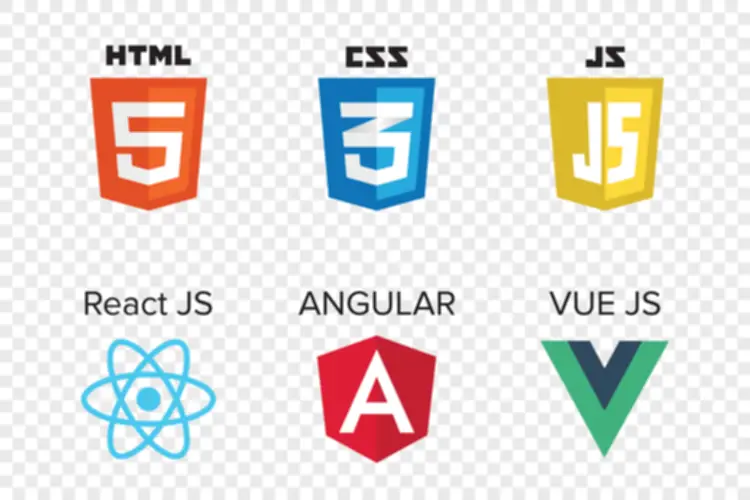Overfitting occurs when a model turns into too complicated, memorizing noise and exhibiting poor generalization. To handle overfitting, we mentioned techniques such as regularization strategies (L1/L2 regularization, dropout), cross-validation, and early stopping. These techniques assist in controlling model complexity, choosing optimal hyperparameters, and enhancing generalization efficiency. Due to its oversimplified nature, an underfitted mannequin might struggle to precisely Software Сonfiguration Management characterize the data distribution.
Methods To Reduce Underfitting
Regularization helps the model give consideration to the underlying patterns quite than memorizing the information. Image recognitionA shallow choice tree is used to categorise pictures of cats and canines. Due to its simplicity, it fails to differentiate between the two species, performing poorly on training images and new, unseen ones. Using the K-Fold Cross Validation methodology, you have been able to significantly scale back the error in the underfitting vs overfitting testing dataset. Discover effective data validation methods to make sure high-quality inputs for AI fashions. If no such patterns exist in our knowledge (or if they’re too weakly defined), the machine can only fabricate things that aren’t there and create predictions that do not hold true in actuality.

Methods To Prevent Overfitting
This allows you to evaluate how nicely your mannequin generalizes and helps stop underfitting and overfitting. A model with high bias is vulnerable to underfitting because it oversimplifies the data, whereas a model with excessive variance is vulnerable to overfitting as it is overly sensitive to the coaching data. The aim is to find a stability between bias and variance such that the entire error is minimized, which leads to a robust predictive model. Overfitting and underfitting – the Goldilocks conundrum of machine learning fashions. Just like within the story of Goldilocks and the Three Bears, finding the proper fit on your model is a fragile steadiness. Overfit, and your mannequin turns into a hangry, overzealous learner, memorizing every nook and cranny of the coaching knowledge, unable to generalize to new situations.

Underfitting: When A Model Learns Too Little
To address this concern, it’s necessary to search out the optimum stop point in the course of the coaching course of, the place the model achieves a steadiness between becoming the coaching knowledge and generalizing to new information. On the other hand, if the model ignores the outliers totally, it might underfit, as it fails to seize these essential information factors. Identifying and handling outliers in the training knowledge is crucial to prevent these issues.
The Importance Of Striking The Proper Steadiness
- It is value making a distinction between “overfitting” and “overparameterisation”.
- Overfitting is a big problem in machine learning the place a mannequin excels on the coaching information but underperforms on new knowledge.
- When a Machine Learning mannequin is underfitting, it means it isn’t studying a lot from the training data, or, little or no.
- This can result in a situation the place the model performs exceptionally properly on training information but poorly on unseen information.
This problem is widespread in lots of ML fashions the place high bias (rigid assumptions) prevents the mannequin from learning essential patterns, inflicting it to carry out poorly on each the coaching and check information. Underfitting is often seen when the mannequin is simply too easy to characterize the true complexity of the info. For occasion, imagine you’re utilizing linear regression to foretell gross sales primarily based on advertising spend, buyer demographics, and seasonality. Linear regression assumes the connection between these elements and gross sales may be represented as a combine of straight lines.
Reducing regularization penalties can even permit the mannequin more flexibility to suit the information with out being overly constrained. For instance, L1 and L2 parameters are forms of regularization used to check the complexity of a model. L1 (lasso) provides a penalty to encourage the mannequin to select only crucial options.
This is because a straight line can’t accurately symbolize the high-level relationship in curved knowledge, making the model’s structure inadequate for the task. I appreciated the question and the key idea to reply it is Bias–variance tradeoff. “There is a connection because I can draw an affordable straight line” is much extra convincing then “There is a connection as a end result of I can draw splines” – because you’ll be able to almost at all times overfit with splines. Now think of whenever you go shopping and purchase a shirt off the rack from a retailer. It might have your measurement on it, however it’s not going to fit your needs perfectly; it’s fitted to suit most people. In like method, an underfitted mannequin is just too basic and doesn’t decide up on the developments in knowledge which are important and thus it does poorly on both training and take a look at data .
For occasion, smartphone assistants, customer support helplines, and assistive know-how for disabilities all use speech recognition. When coaching these fashions, knowledge from speech samples and their appropriate interpretations are used. If you employ too few features—such as solely the size and sort of the house—the mannequin won’t have entry to crucial information. For example, the mannequin may assume a small studio is inexpensive, without figuring out it is located in Mayfair, London, an space with excessive property costs. For instance, if a mannequin tries to make use of a single straight line to model information that follows a curved sample, it will consistently underfit.
This can happen when information preprocessing steps, corresponding to function choice or knowledge imputation, are performed utilizing data from the whole dataset, including the take a look at set. Underfitting stems from fashions being too simple, whereas overfitting happens when models are too complex. Overfitting models memorize the training knowledge, doing properly on familiar inputs but failing on new ones. Finding a stability between these extremes is key for the most effective mannequin performance. Overfitting happens when a model learns an extreme quantity of from the coaching knowledge, reducing its capacity to handle new information. Regularization is a main method that makes complicated models much less complicated, enhancing their capacity to generalize.
Inadequate preprocessing, insufficient training time or a scarcity of sufficient information to coach the mannequin can also contribute to underfitting. When a model performs very well for training knowledge but has poor efficiency with check knowledge (new data), it is called overfitting. In this case, the machine learning model learns the major points and noise within the training information such that it negatively impacts the performance of the model on check information. Finding the optimum steadiness between model complexity and generalization is crucial for real-world machine learning purposes. A mannequin that overfits fails to generalize to new information, resulting in unreliable predictions or selections.
These methods allow the model to capture more intricate relationships and improve its learning functionality. Visualizing overfitting can present valuable insights into the phenomenon. Consider a scatter plot of knowledge points belonging to 2 courses, with a non-linear choice boundary separating them. When a simple model, similar to a linear classifier, is used, it might underfit the information by failing to capture the non-linear relationship. However, as the mannequin complexity will increase, it might possibly fit the coaching information more precisely. At a certain level, nonetheless, the complexity surpasses the optimum degree, and the model starts capturing noise, leading to an overfitted determination boundary that poorly generalizes to new data.

Both college students fail the take a look at, but no much less than one knew ahead of time and did not waste a lot of effort for nothing. 5) Regularization – Regularization refers to quite so much of strategies to push your mannequin to be easier. For instance, you can add a penalty parameter for a regression (L1 and L2 regularization), prune a choice tree or use dropout on a neural community.
To mitigate this, it’s essential to make use of a various and unbiased training dataset that displays the true traits of the problem you’re attempting to resolve. Outliers – knowledge factors that significantly deviate from nearly all of the information, can have a profound impression on machine studying models. Understanding the causes of overfitting and underfitting is crucial for effectively addressing these issues in your machine studying models. Overfitting typically happens when models are trained on insufficient or noisy knowledge. Encord Active incorporates energetic studying methods, allowing users to iteratively choose probably the most informative samples for labeling. By actively choosing which data factors to label, practitioners can enhance mannequin performance while minimizing overfitting.
Overfitted fashions generate parameters that are strongly reliant and biased towards the pattern quite than being consultant of the whole population. For any of the eight potential labeling of points offered in Figure 5, yow will discover a linear classifier that obtains “zero training error” on them. Moreover, it is apparent there is no set of 4 factors this hypothesis class can shatter, so for this example, the VC dimension is three.
Transform Your Business With AI Software Development Solutions https://www.globalcloudteam.com/ — be successful, be the first!